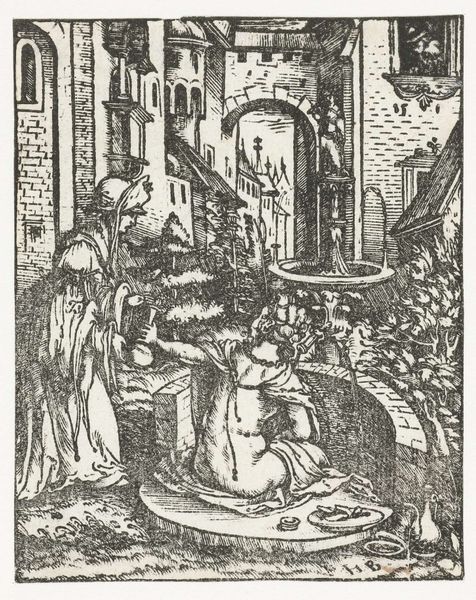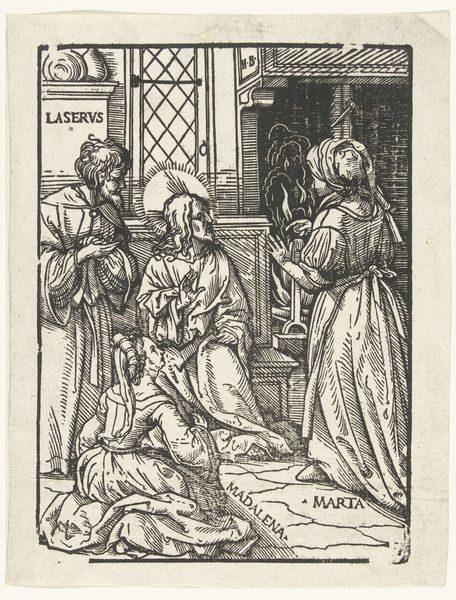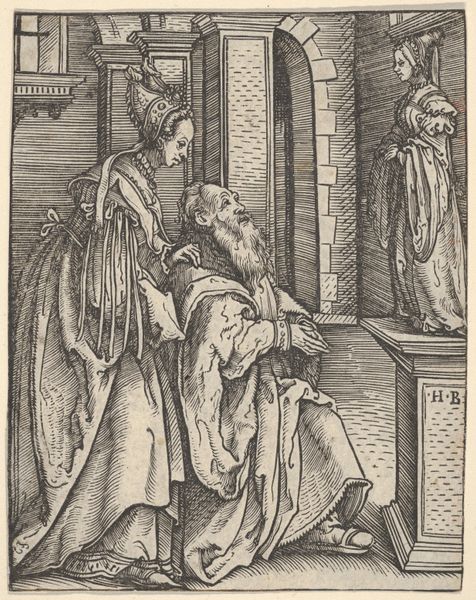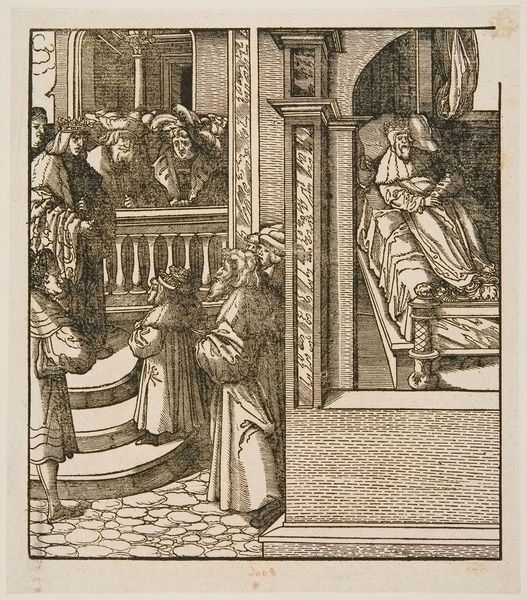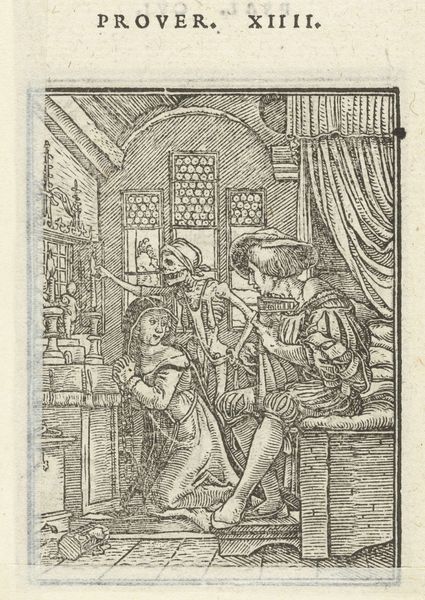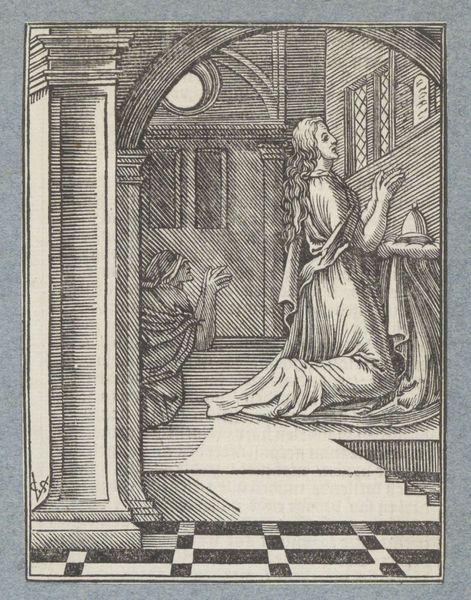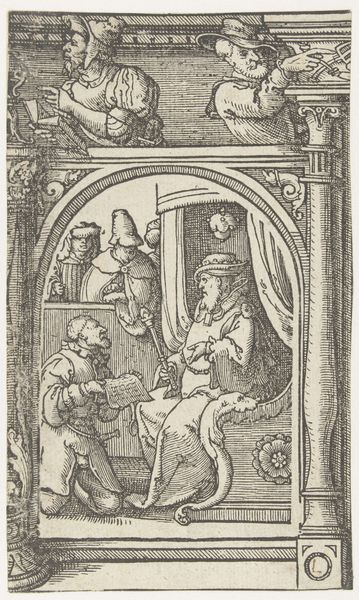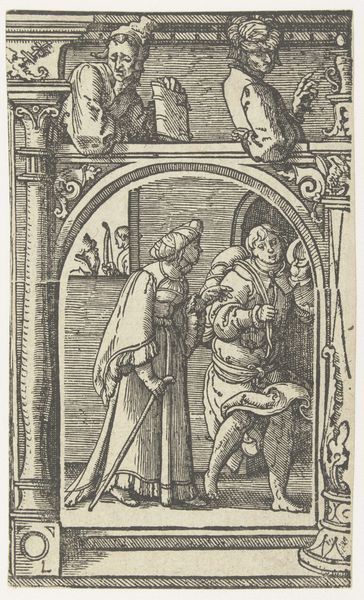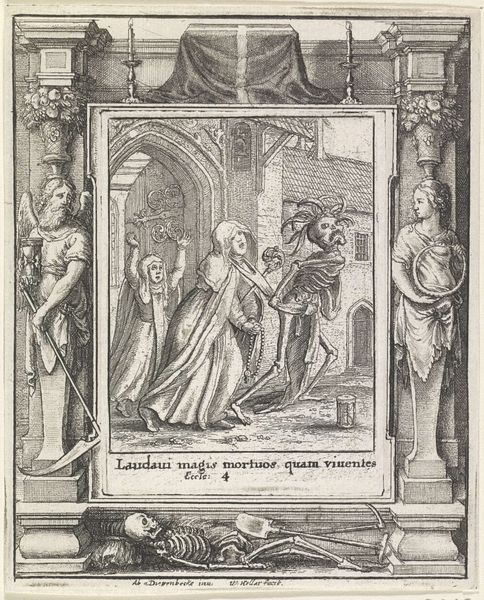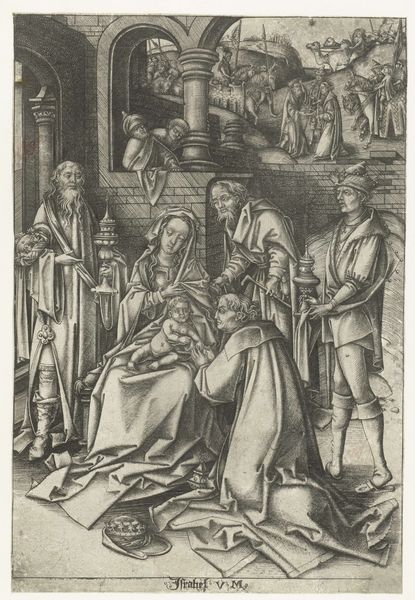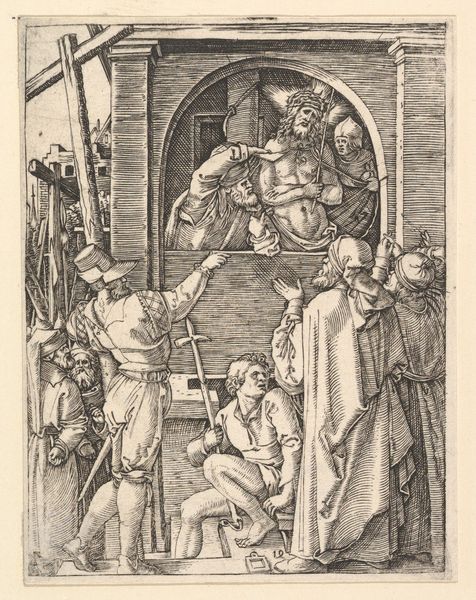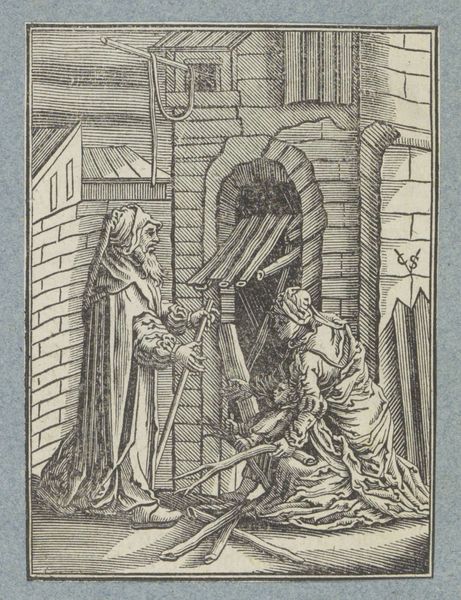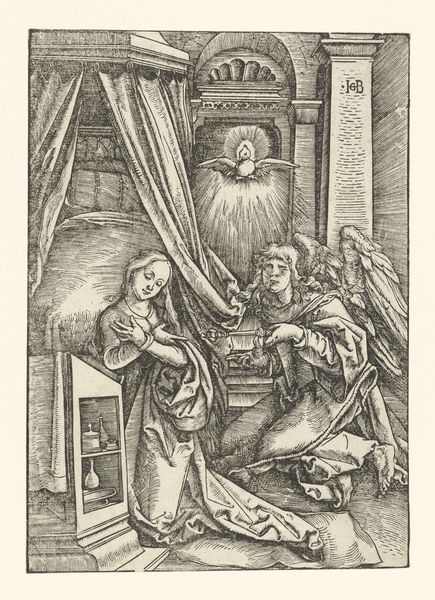
drawing, print, woodcut
#
drawing
#
pen drawing
# print
#
figuration
#
woodcut
#
history-painting
#
northern-renaissance
Dimensions: height 117 mm, width 94 mm
Copyright: Rijks Museum: Open Domain
Curator: This compelling woodcut print, crafted sometime between 1483 and 1531 by Hans Burgkmair, depicts “Solomon Worshipping an Idol”. What strikes you most about this figural scene? Editor: The weight of the story, instantly. There's something very human and frail in Solomon's posture, you can feel the inner conflict etched onto his face and posture, though the execution feels distant, almost… archetypal? It also speaks to how the smallest of visual inputs have the power to evoke a range of feelings and ideas in our own time. Curator: It’s fascinating that you point that out! Burgkmair really harnesses the language of symbols here. Note how Solomon’s gesture of supplication to the idol speaks of surrender not only to foreign gods, but perhaps also to the persuasive influence of his wife—it echoes through the centuries: familial relations trumping ideals, or the idea of broken alliances, still hitting hard today. Editor: The repetition of figures adds a formal, symbolic touch, as though the event repeats over and over as a kind of psychological loop. There’s the weight of judgment hanging in the air – that statue is really just an ominous stand-in for an inevitable guilt, dooming him for generations to come. Also, in this crisp black and white, there are shadows, making the print oddly atmospheric. Curator: I find it intriguing that this work exemplifies how printmaking played a vital role in spreading biblical narratives during the Northern Renaissance. Its symbolic and accessible visual language aided the transmission of religious concepts, while its style reflects the detailed linear quality cherished during the era, all contributing to the broader dissemination of morals and values, right? Editor: Precisely! This relatively small print, likely intended for mass circulation, showcases the potent reach of imagery in shaping cultural memory. Thinking of Burgkmair's artistic choices, especially how the space is compressed around them – makes it feel like a stage set. Very conscious and artful! Curator: Yes, there’s such an interweaving of psychological tension and cultural memory imbued in the work! What a powerful way for an image to both illustrate and indict. Editor: Absolutely. I walk away seeing Solomon as this representation of someone burdened, succumbing, in the eye of a brewing symbolic storm.
Comments
No comments
Be the first to comment and join the conversation on the ultimate creative platform.
